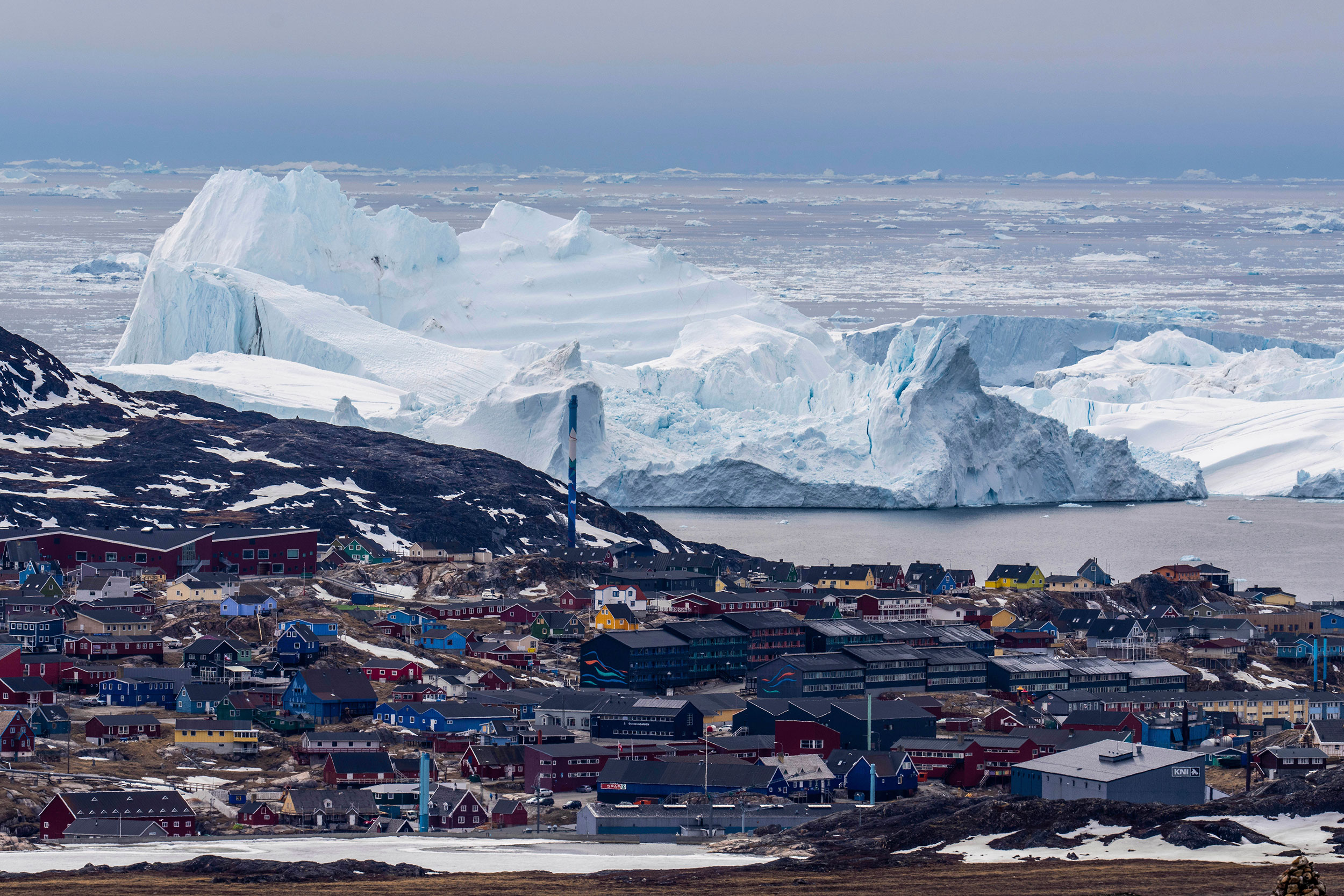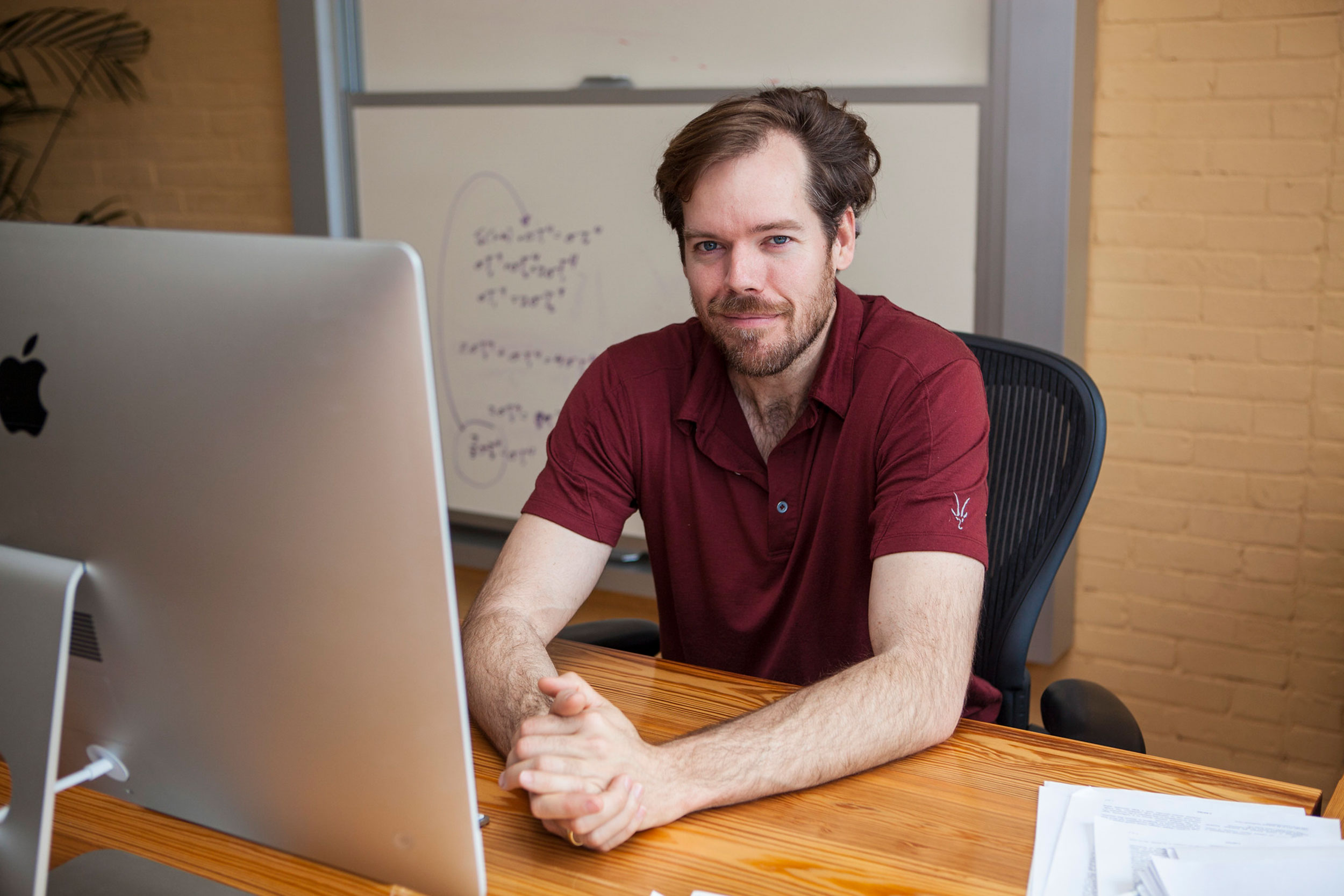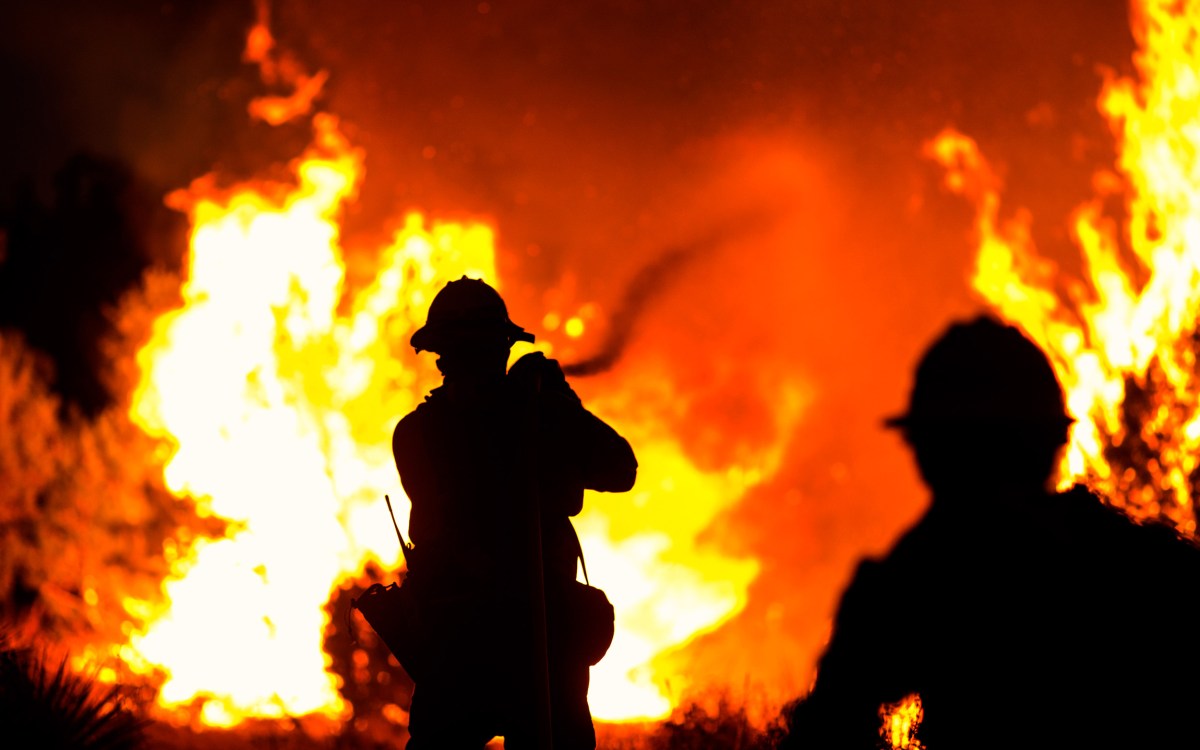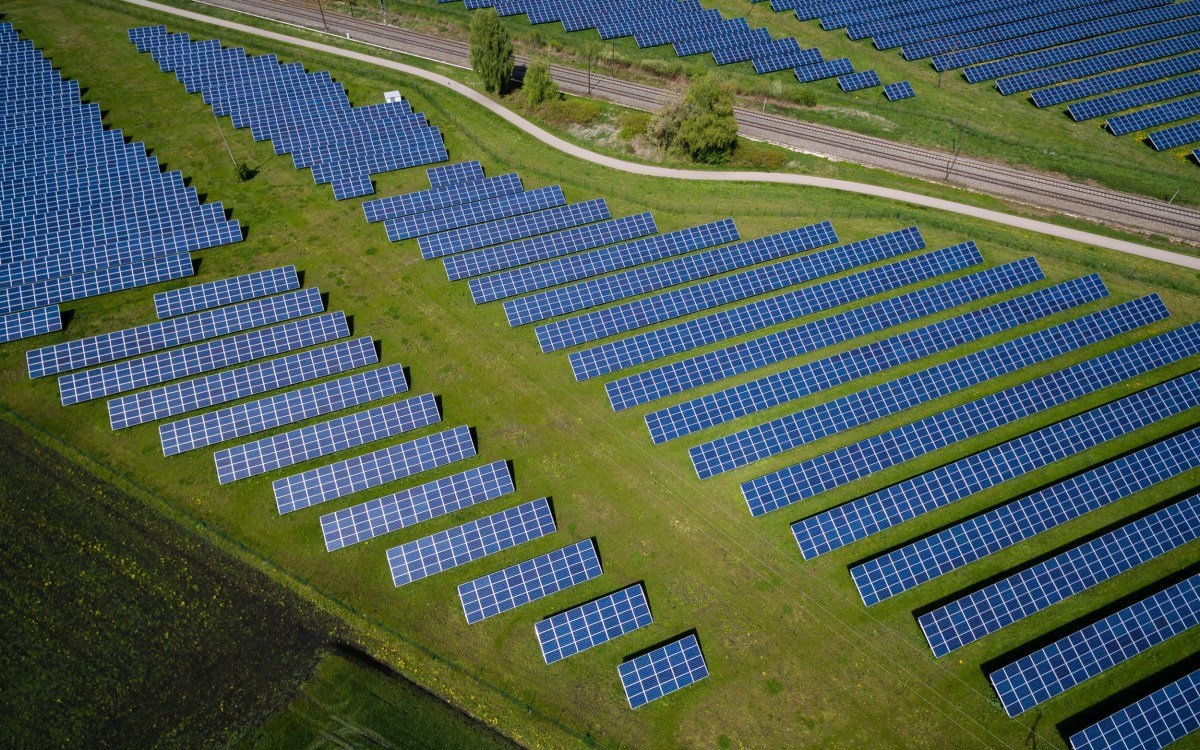
Melting icebergs and the retreating ice cap are visible in Ilulissat, Greenland, where climate change is causing irreversible damage.
Ulrik Pedersen/NurPhoto via AP
Climate scientist on UN report: Just as bad as we expected
Peter Huybers of SEAS says global response should include satellites, alternative-fuels research, and a commitment to food security, education
In a major United Nations report released Monday, the more than 230 scientists who make up the Intergovernmental Panel on Climate Change described “unprecedented” climate change over the past century and warned in similarly unambiguous language that the world will descend further into catastrophic warming absent rapid and aggressive action to cut emissions of carbon dioxide and other heat-trapping gases. We asked Peter Huybers, a professor of Earth and planetary sciences, about the research behind the report, the panel’s first since 2013, and the harrowing details contained within it. The interview was edited for clarity and length.
Q&A
Peter Huybers
GAZETTE: Can you talk first about the climate effects the report identifies as irreversible?
HUYBERS: Irreversibility means that even if other conditions were returned to a baseline condition, the system would not recover. An example is tipping a table until your soup bowl spills, and the fact that returning the table to level doesn’t put the soup back in the bowl.
Studies indicate that the melting of the Greenland ice sheet is irreversible in the sense that, after the ice sheet melts, it would not regrow even if we otherwise returned the climate to pre-industrial conditions. The ice sheet is a vestige of a colder climate deeper in Earth’s past that is maintained, crucially, by high rates of accumulation on its flanks and cold temperatures atop that its own height affords. In this sense, the melting of Greenland and the consequent rising of sea level are irreversible.
The IPCC report also uses the term “irreversible on centennial to millennial time scales” in describing melting of permafrost as well as the warming, acidification, and deoxygenation of the ocean. Permafrost is slow to regrow and the deep ocean adjusts over centuries to millennia, so in this sense these systems will not fully recover over societal timescales even under the optimistic scenario of returning the atmosphere to a pre-anthropogenic state.
“Every year since 2013 has been warmer than it was in 2013 and every year prior in a record that dates back to 1880,” said Peter Huybers of the Harvard John. A. Paulson School of Engineering and Applied Sciences.
Eliza Grinnell/SEAS

GAZETTE: The Sixth Assessment Report uses stronger language than previous assessments to address the influence of human activity on climate change: “It is unequivocal that human influence has warmed the atmosphere, ocean, and land.” Are there specific findings, historical or otherwise, that have made this connection even clearer than it was eight years ago?
HUYBERS: Yes, this report uses language that is more strident and confident. One contributing reason for this change in tone, I suspect, is the simple fact that in the eight years that elapsed between AR5 and AR6, the climate continued to change, in keeping with predictions for warming, loss of ice, rates of sea level rise, and changes in storms. I’ve seen more than one news piece suggesting that climate change is worse than we expected, and perhaps that is the case with regard to certain consequences, but with regard to overall physical changes, they are as the scientific community generally expected, and which to me seem plenty bad enough to motivate action.
This situation can be contrasted with AR5, which was released at a time when it wasn’t clear if the climate had warmed in the preceding 10 years at rates that were consistent with our predictions. This so-called hiatus in global warming turns out to have been exaggerated by artifacts in how global temperature trends were estimated — for example, excluding much of the fastest warming regions in the Arctic. Moreover, every year since 2013 has been warmer than it was in 2013 and every year prior in a record that dates back to 1880. It’s clear that the warming trends expected in response to rising greenhouse gases are materializing at the expected rates.
Another factor is that there were several studies that the scientific community was contemplating around the time of AR5 that suggested rather low values of equilibrium climate sensitivity, a measure of how much the Earth would ultimately warm in response to a doubling of atmospheric CO2 concentrations. Very low ranges have been ruled out now, along with some tightening on the higher end, giving a likely sensitivity range of 2.5°C to 4°C as compared with 1.5°C to 4.5°C in AR5.
GAZETTE: With an eye on the clock, are there certain areas of climate research and/or policymaking where global leaders should concentrate resources?
HUYBERS: Sometimes climate change is treated like the sky is falling, which implies a final crash. In fact, the composition of the sky is being steadily altered to trap more heat, and we need both short- and long-term strategies for bringing the climate back into equilibrium. The imperative to act doesn’t go away if — and, I’m afraid, when — we allow Earth’s surface temperature to warm by more than 1.5 or 2 degrees Celsius. For example, widespread electrification of ground vehicles is plausible in the near term because price and performance are competitive with fossil fuel-based alternatives, but we also need a longer-term solution for eliminating greenhouse gas emissions from air travel. Alternative ways of making jet fuel and capturing CO2 from the atmosphere are currently costly possibilities — can we make these cheaper or find another way?
Additional research to improve prediction of climate change is also still warranted because, for example, there are big differences in the consequences of 2.5 versus 4°C per doubling of CO2 concentrations. There are notable opportunities to increase our rate of learning about the climate system by developing a constellation of satellites to monitor the flow of energy in and out of the Earth system. Another constellation of satellites could monitor greenhouse gas fluxes for purposes of better holding nations accountable for their emissions.
Let me also highlight a broader issue: that no one can be expected to prioritize reducing greenhouse gas emissions absent a just standard of living. In some places that means helping adapt to the consequences of climate change, such as rising sea level, but more often it means things like ensuring food security, providing access to education, and working for peace.
GAZETTE: What is the best-case scenario for humankind if leaders were to start acting tomorrow on the findings in the assessment?
HUYBERS: Many world leaders, to their credit, are attempting to address the issues raised in the assessment. One best-case scenario is for world leaders to agree to policies that will substantially reduce greenhouse gas emissions, at the 26th UN Climate Change Conference, scheduled for November in Scotland. Another, more general best-case outcome is for world leaders to build upon our shared interests in stabilizing climate to promote greater well-being and stability generally. Of course, political leaders can only get so far out ahead, such that any best-case scenario implies ample foresight and willingness on the part of people generally.







